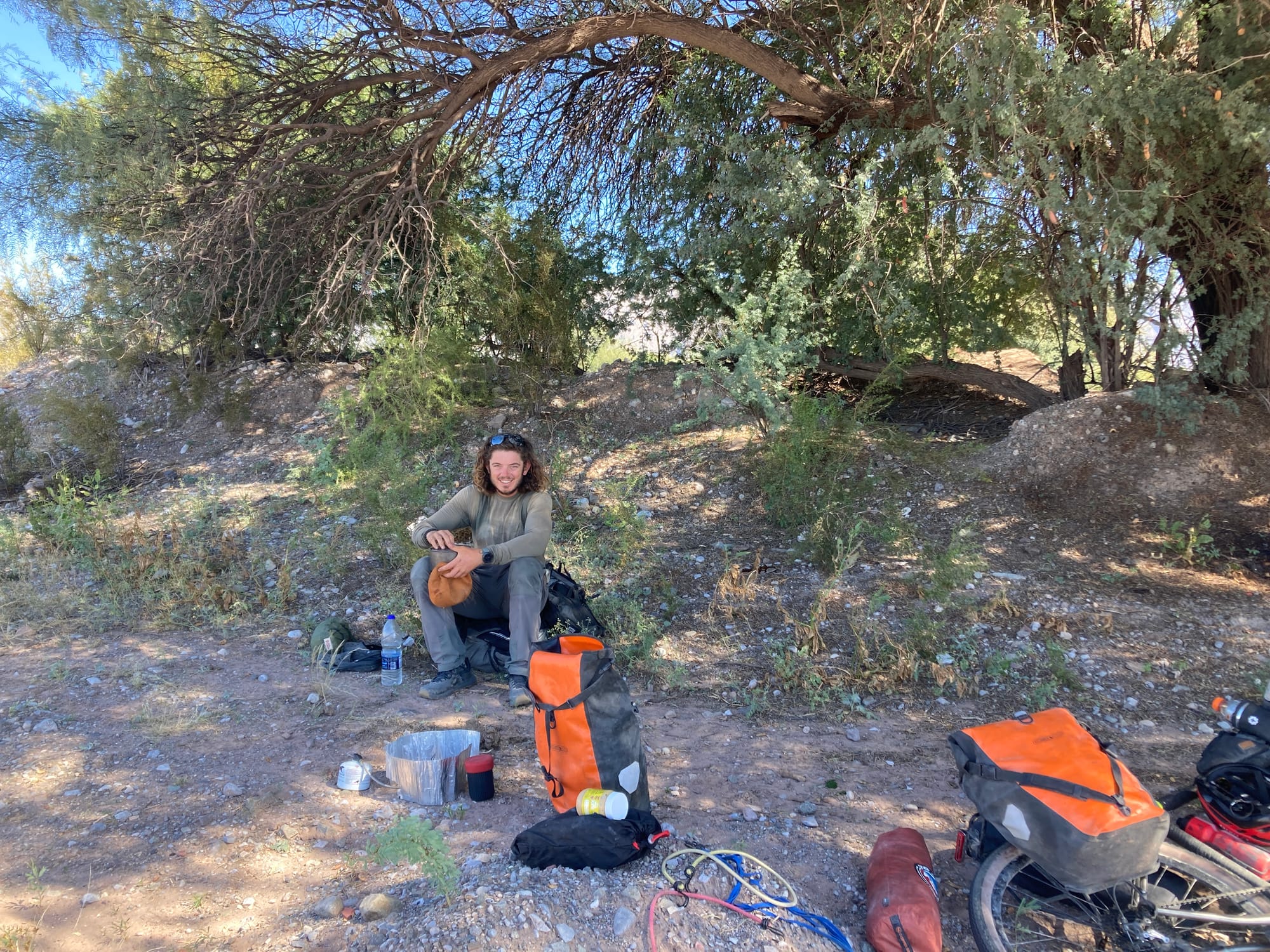The Strangest Person You Met
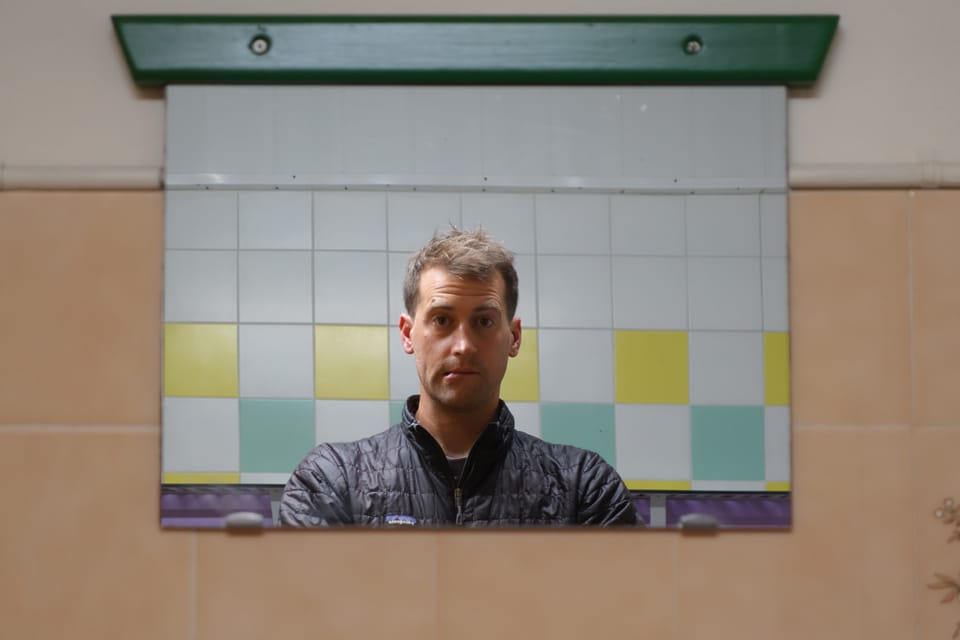
It’s nearing a half year since I was asked “Who was the strangest person you met?” It’s easy to beat myself up for the dearth of recognisable outputs over these months compared with the reliable accrual of kilometres and memories during the preceding year but, as my friend Caroline once gently chastised me, “Time is non-linear.” And, in any case, there’s been Christmas, a successful job hunt and an adventure through the Aussie alpine region to alleviate a total drought of accomplishment. (Is Christmas an “accomplishment”?)
During moments of undistracted calm serene half-smiles and misty eyes can develop and linger, visual visage clues that a memory has been triggered. I enjoy them in a definition unconfined by pixels and decibels. But I’m aware that they will abate and fade and I should therefore work some to limit their corrosion. Keeping a journal was one tool. Taking photos to capture how it is was another. I’d love to be a good photographer but I’m not. Not yet anyway. So I took many photos simply to aid remembrance. Which means I have a lot of photos to sift. An outstanding task.
Over the Easter weekend I managed to give myself the ultimate hit of recollection high by reading Piers Paul Read’s “Alive”. This is the unsparing, sympathetic yet savage account of the Uruguayan plane crash in the Andes that was relaunched into the popular domain with Netflix’s impeccable “Society of the Snow”. If you haven’t, read and watch.
What relevance does The Christmas Miracle possess to my stock travels? (Let’s deal with the crass: I gnawed on no human.) Once the Chileans had concluded their international convention-dictated 10-day search, which was hampered and curtailed by adverse weather, relatives of the passengers began their own. Steered by the visions of a Dutch clairvoyant and perhaps a bias for accessible altitudes the names of Vilches, Descabezado Grande and Laguna del Alto appear as they scramble to correlate the parapsychologist’s descriptions with topographic reality. These are names that I recall fondly. In the height of summer I climbed to El Enladrillado, a place repeatedly mentioned by Seba, the most friendly and supportive person I met during my year on the bike, whom I met on top of a volcano and who would host me a few days later at his family home on the Pacific. At the time I didn’t have a backpack so for my day’s yomp I fashioned one out of my bar bag, packing a picnic, water, layers, sun cream, camera and kindle. An up and back I ignored the signs pleading me to loop via Laguna del Alto, a decision I shan’t entertain to justify.
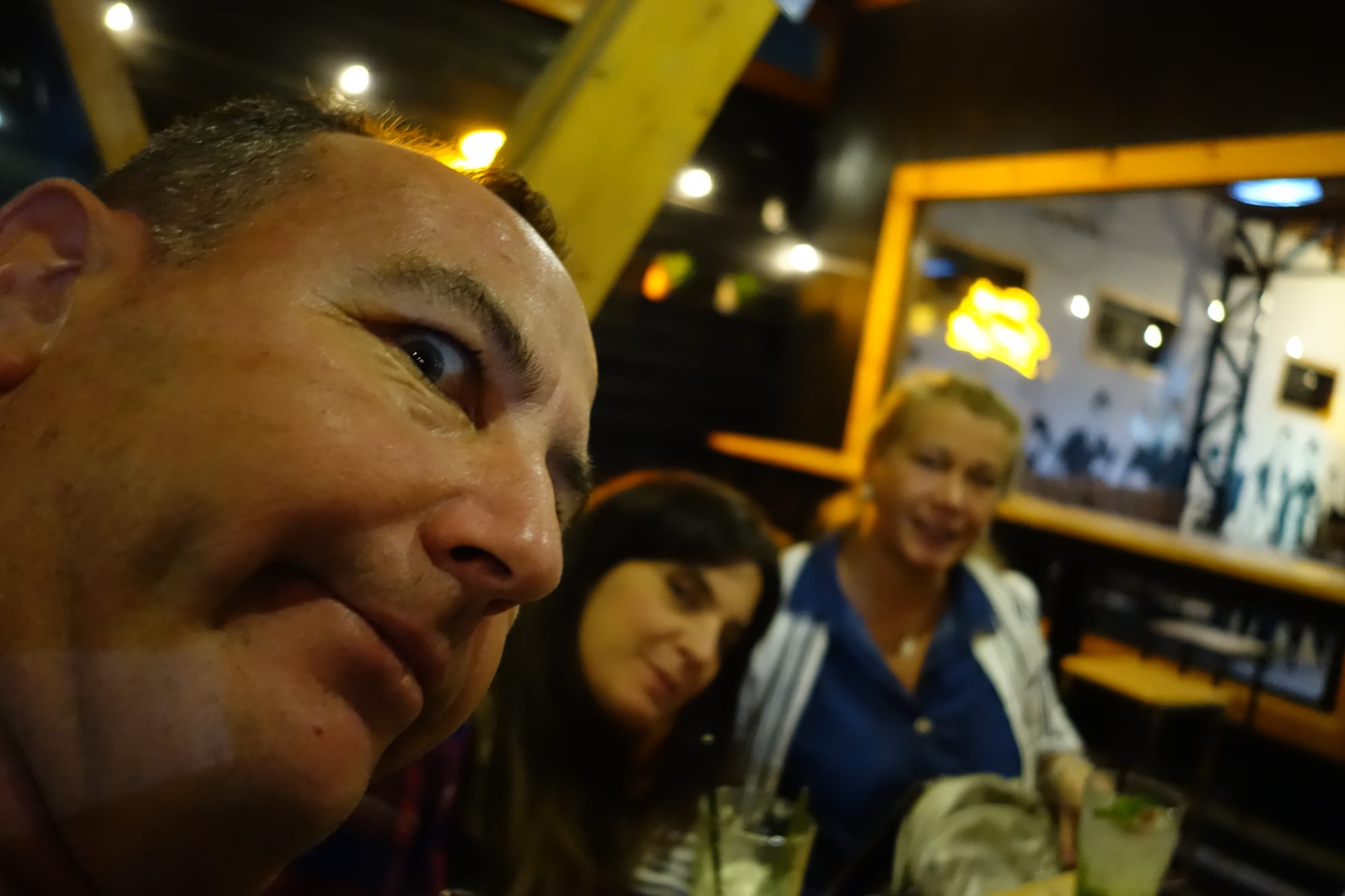
Halfway up I judiciously paused to refill water and my Garmin watch entrusted to record my location walked circles around me. Garmin is good. Garmin is bad. My camel’s hump replenished I marched on upwards, entering dry, rocky terrain. Looking back you could see all the way to the coast across Chile’s central valley. Though perhaps I was fooling myself. After all the sky and sea blend their blues at the horizon. Your escape from the forest is rewarded with an ever increasing incline over and between the black mica encrusted pink granite culminating in a sneak through a gap of such towers. Over the lip you’re served an hors d’oeuvre. The terrain is gentler now, a gravel field stretches ahead until it angles up to a sharply defined horizontal line of solidity: a castle upon foundations of dust. This is the table named El Enladrillado, “The Brickwork”, and peaking behind it is the monstrous brute of Descabezado Grande, the “Headless” volcano. It was one of those incomprehensibly emotional experiences reaching the line and walking out upon the giants’ terrace the far edge of which is demarcated by a sheer drop of 1,000m that clears the near horizon for a triumvirate of volcanoes of which Descabezado Grande is its Caesar. The sky was not cloudless but that added to the mystique, filtering the colours to an ethereal palette. Looking ahead there isn’t a road for 100km. There, directly east over the barren Andes, is an Argentine Ruta Provincial that cuts north to Paso Vergara. At least that’s the name by which I knew it. As a devout follower of the Chilean WhatsApp channel for pass conditions and opening hours I’d noticed that one remained stubbornly closed. A storm or snow or a belching volcano had destroyed a section on its upper reaches. It reopened this year. I’d love to ride it. In Argentina it’s known as Paso Planchon and this is the name that Read used in Alive.
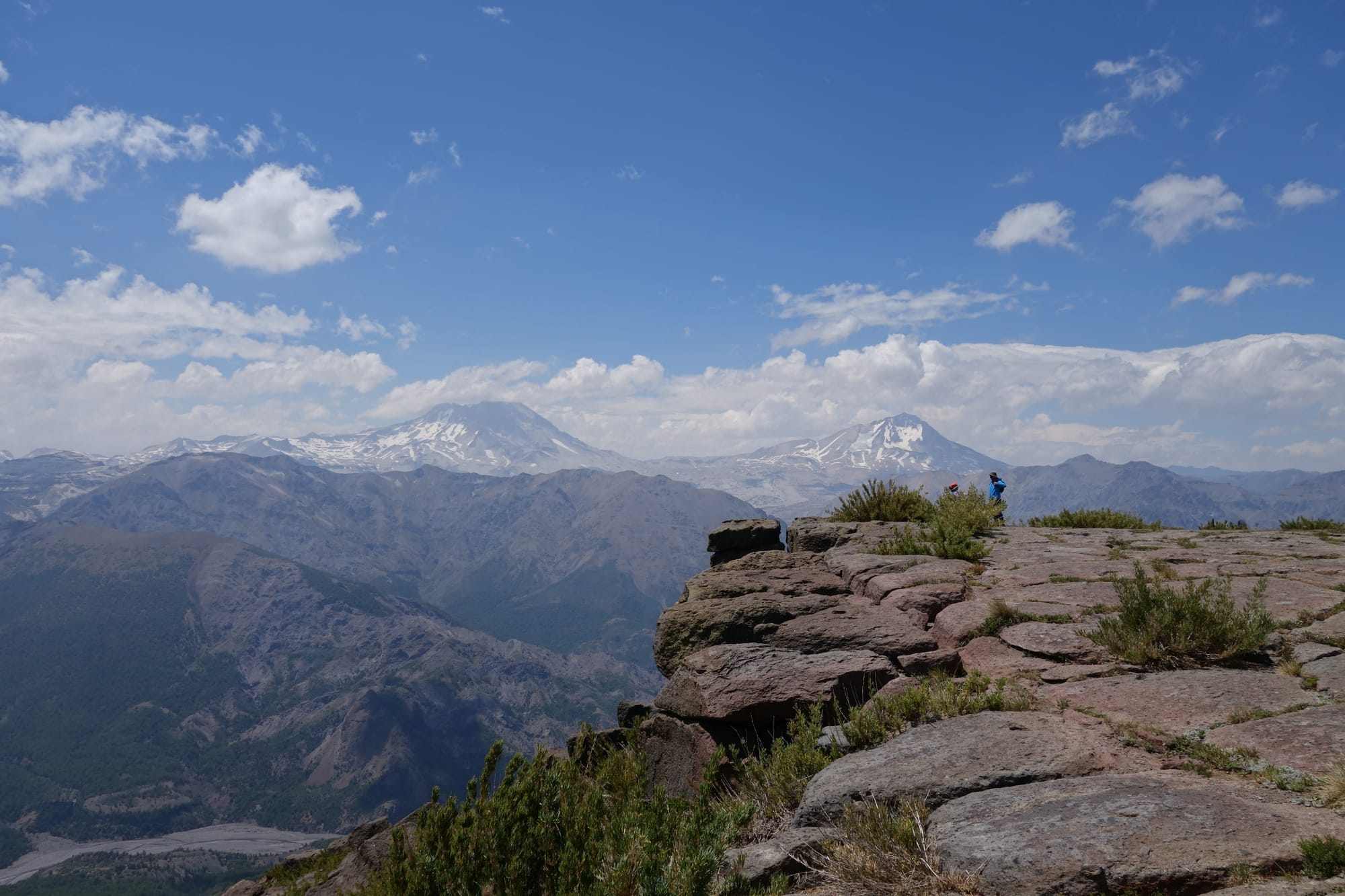
El Enladrillado wasn’t discovered until 1968. The Uruguayan Fairchild crashed on October 13th 1972. The area that I drank in with my eyes, made tipsy by its grandiose vastness untouched by man, would have been largely if not entirely blanketed by snow. The 200-odd massive stones that constitute the plateau with their impossibly square edges confound geological and archaeological interpretation. The site has also become known for an excess of UFO reports. But the parents had been led south of Paso Vergara when the plane had gone down to its north. I had watched La Sociedad de la Nieve and stood there I did think, “How?” It was summer and you could easily lose yourself in those yawning valleys and proud mountains. How could you escape?
That the Andes range is South America’s “spine” obfuscates its lateral extent; a truth tattooed into my psyche by my final days cycling out of them in Peru. The highest point on my journey was 4,850m. The place had no name. The sign simply read, “Abra”. An unnamed pass. And it came after a triplet of teases rollercoastering my mind over 50km above 4,000m. 50km that sat in extremis of a fortnight’s traversal from Cusco to the coast.
A year ago I was looking ahead to Rufus joining me in Salta. I was also looking back at a magical week in Cochiguaz at Rob and Jimena’s… I must call them, it’s been a while. I’d bounced from the intense loneliness you feel having left such a familial environment to the crazy buzz of spontaneous Argentine hospitality, and back again. Rufus’ arrival was a month away. Which felt like a long time. I decided on a series of small days. Small days so that I could camp in villages. I could eat well and chat with people. I could wash.
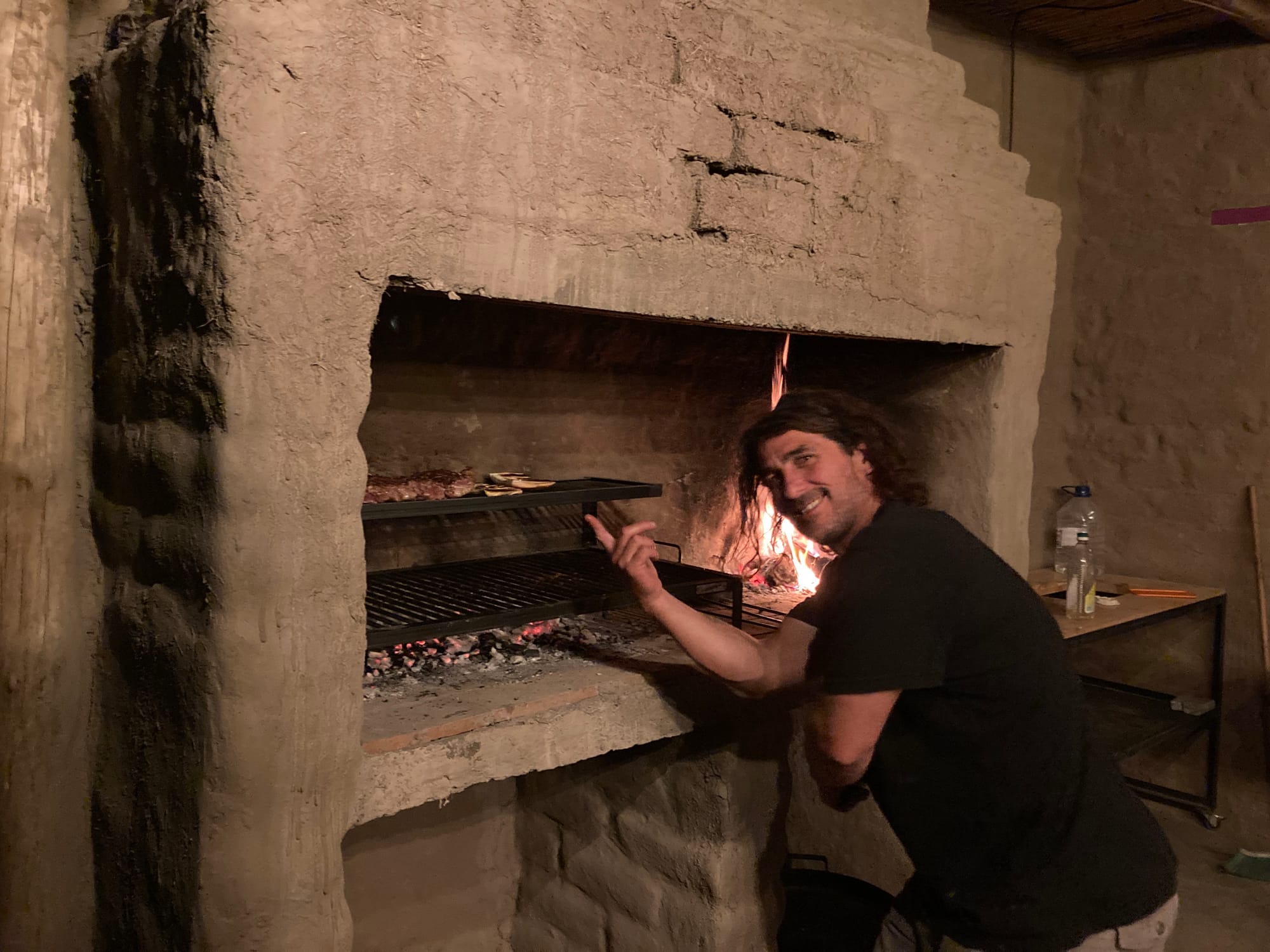
On day one from Rodeo I passed a man early doors walking with a big hiker’s backpack. I didn’t think much of it. Probably some guy that’s been for a walk, heading to his car or something.
I rode 50km that day to San Jose de Jachal. It had a camp site that promised good facilities. Sadly I was the only occupant and the pool wasn’t enticing. But San Jose was big enough to spoil me for dinner choices and I treated myself to the best. The post office provided Western Union without any privacy. In the morning I made off with a healthy stack of 1,000 pesos notes, ramming them into my panniers and hoping no one would stalk me. San Jose’s landmarks are an explosives factory and a hospital. They’re not neighbours.
Day two was an even shorter 37km to Huaco. And the road was going to snake its way through a low pre-cordillera such that I would barely climb a metre. The first kilometres were straight roads through farmland and although I wasn’t overly keen to arrive in empty Huaco fast I picked up the pace and was barrelling along when up ahead… no! It can’t be! I swivelled in astonishment. And doubled-back.
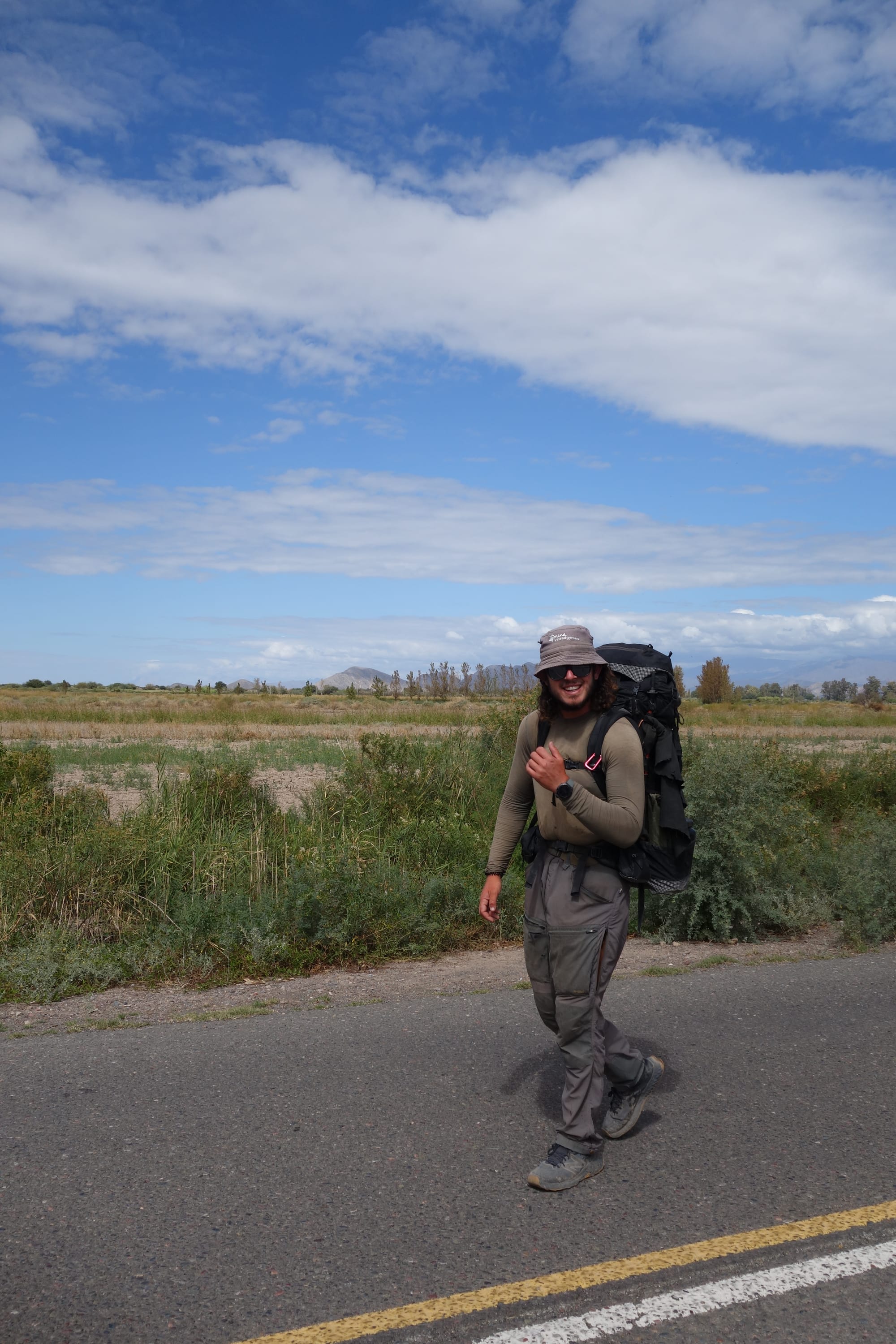
For the next hour I crawled alongside as Ollie maintained his rhythm. Bedecked in an army palette he wore technical trousers and a long sleeved woollen tee. His shoes, black New Balance trainers, suggested they weren’t his first pair of this odyssey. What odyssey? He’s walking the entire length of the Andes. From Ushuaia to somewhere in Venezuela which he recently entered. Ollie Treviso. The Welsh walker with an Italian father. Walking in aid of Mind Ystradgynlais. With his long, curling, rich brown hair and rugby-flattened ears that point heavenwards, Tolkien would have found elf, dwarf, giant and man amongst his ancestors. He possess the kindest eyes and kindest smile. And he’s the most impressive person I met.
Ollie was also aiming for Huaco. He on foot the tortoise. Me on bike the hare. So I promised that whether or not we were reunited that evening the next day I’d find him on the road and make him coffee. We parted as I began to pedal with purpose and soon I entered the canyon at its narrow, dammed head. This was one of the unexpected scenic highlights that culminated with the Cuesta de Huaco viewpoint where I paused to admire the painted landscape of yellows, reds, green and blue, corrugated and dolloped by childish hands. Patricio, travelling on his motorbike, gave me some fruit. Two campervans of retired German couples pulled in. And then they all left. The road had otherwise been quiet.

When I came across our ninja turtle in the morning he wisely asked if I’d cycle ahead and provide a target. Off I went, a mile up the road. Stove out, Aeropress to the ready, I also had some cookies. When Ollie arrived a brew was served shaded by a tree from the intense Sun. I was enjoying this companionship. But I was careful knowing that once again we’d part and this time we’d unlikely coalesce up the road with its forks, divides and, simply, our differing modes of transport. That evening I would be in Guandacol with a campsite and people. Ollie would be halfway there, in a no man’s land seeking an acceptable patch for his tent, and with no water in sight. Well that evening I met three cyclists headed south. Tristan, a Swedish-looking Frenchman in a light blue linen shirt, and the backpackers-turned-bikepackers Emile and Julian. We bought bottles of the campsite’s “organic” wine and chatted into the dark night.
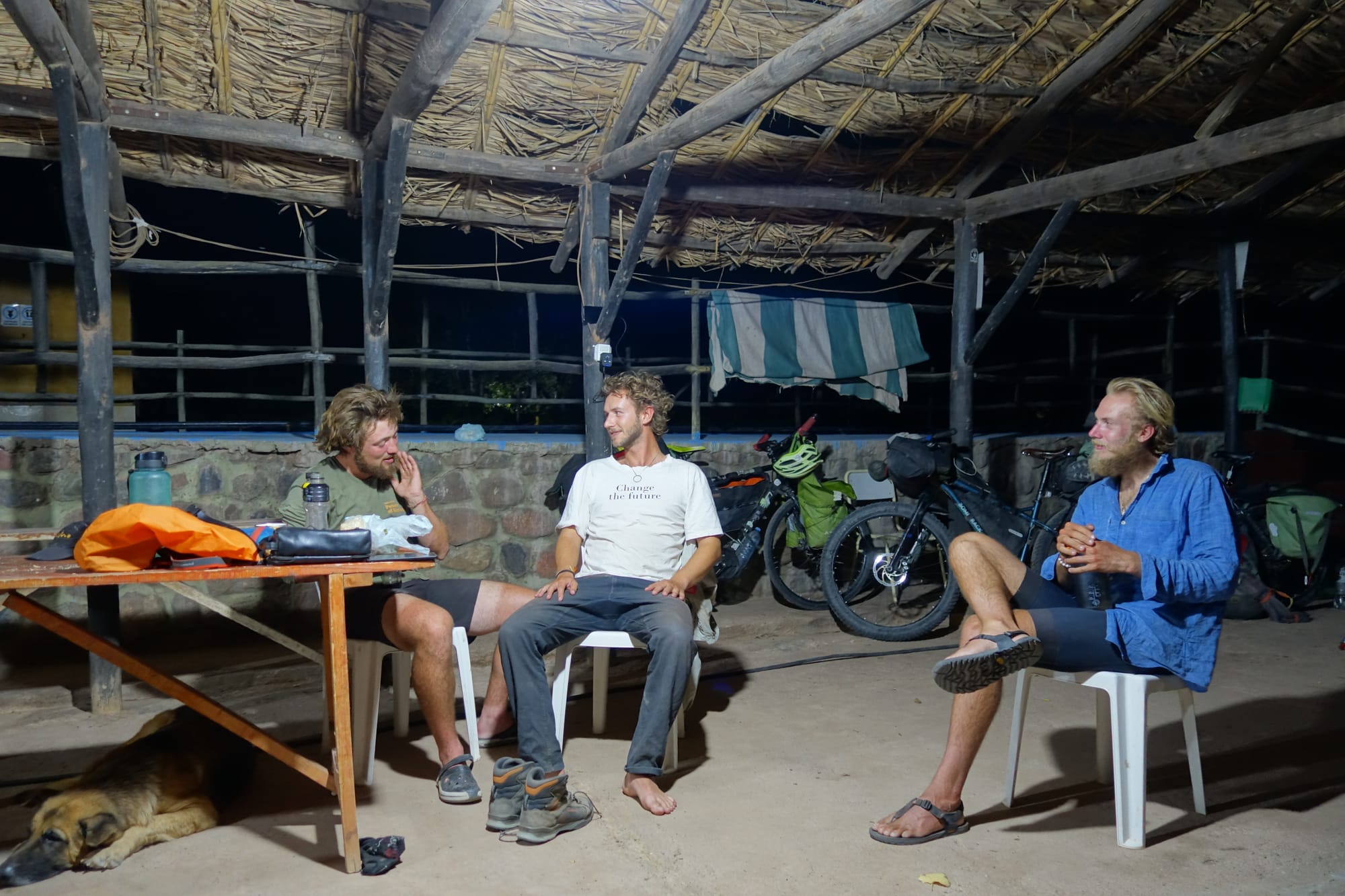
In the morning I gave the trio some coffee and asked them to stop as soon as they see the hiker and prep a brew. They did and so they too met Ollie. Surely a highlight.
There was a chance that with Rufus’ holiday I’d be stalled long enough for Ollie the tortoise to retake the lead. He duly did but whilst he forked left over Paso Jama into Chile I subsequently bee-lined straight up into Bolivia. And that was that.
Until walking the streets of central Cusco we met again.
“Who was the strangest person you met?”
Rosie tried to help me. This person. That person. Most of them. You’re all strange for cycling so far.
And then there’s Ollie. He’s walked and walked and walked. She didn’t say that and I didn’t think it. The “strangest person” question just lodged rent free in my head until eventually, “Aha!”
“Who was the most impressive person you met?” Ollie.
If strangeness is an admired quality. If strangeness is intrigue.
I’ll never forget our pizza in Cusco. His parents had left — he’d paused his journey on the shores of Titicaca to rendezvous with them — and I recognised that awful, looming, heavy loneliness that makes you forget to breathe. Exaggerated by the sole visit from home in a year being his most loved parents it was raw and etched. Thankfully his girlfriend whom he’d met in Bariloche (where a dog saved his life) was soon to join him on the altiplano. Look forward. Easier said than done. I encouraged him to move to the hostel where he could be distracted by us bunch of misfits. He didn’t but we hung out the day after and he was more buoyant.
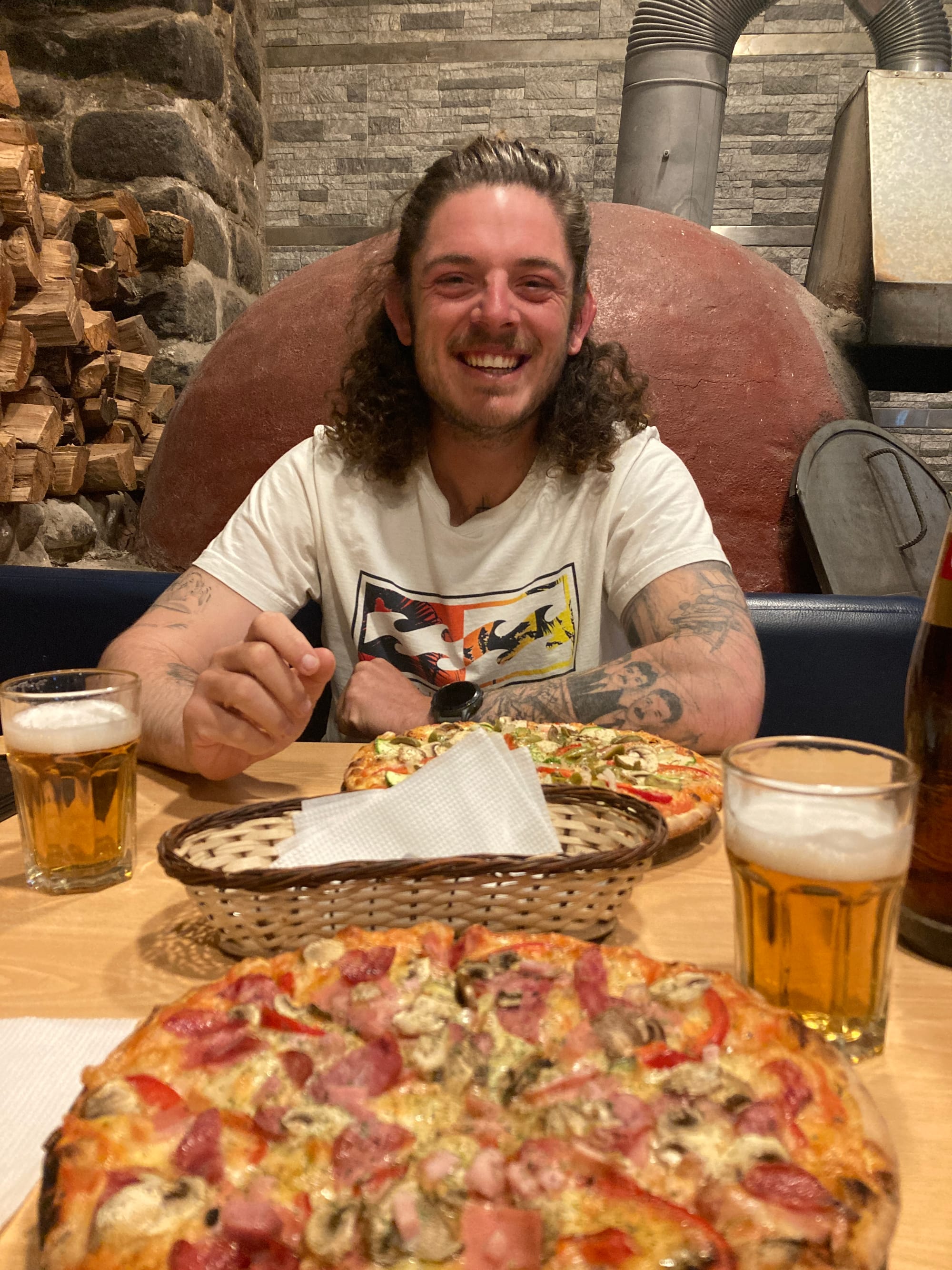
Ollie is now safely in Venezuela and walking with his guide Rafa towards the end of the Andes. All going well he says he'll finish at the end of May.
Please give him a search and consider donating either to Mind Ystradgynlais or supporting Ollie directly. As you'll see from his posts he has been on the receiving end of the most heartwarming and entertaining hospitality. Negative experiences have been few and far between but inevitably during such an undertaking bad shit has happened. In Colombia he was mugged, robbed of kit and cash by machete-toting lads. Fortunately individuals and companies have rallied to support him, keeping the show on the road.
For whatever sociological reasoning Latin America is broad-brush painted as “dangerous”. This is wrong. Personally the most unsafe I felt was the time a Peruvian boy badgered me on the cost of my bike and the amount of cash I was carrying. Disastisfied with my evasive and truthful answers he whispered in the ears of his tiny gang to similarly interrogate me. The most shocked I was was the time a toothless man loomed out of the mist, mouth full of coca garbling nonsense about the road being impassable. Any difficulties were the result of my own choice.
Sadly last year there were two gruesome reminders of what can happen if you tread into known danger areas. By way of the Frenchman with whom he sailed to Brazil at the start of his epic Ollie knows well the details of one of these. To be adventurous today is largely safer than past times. Risks have migrated from natural to social. Overly cautious in other parts of the world the UK's FCO guidance on South American countries appears measured. Peru's VRAEM region, where remnants of the communist guerilla group Shining Path have morphed into narco groups, is an area best avoided. But if you're seeking adventure, if you want to see how life “really is”, would you accept the risk – a reduction in probability of total safety – to be alive and explore? A young man lost his life there last year in myserious but no doubt criminal circumstances. Perhaps he looked at someone strangely. Maybe he took a photo. Or just being an outsider was enough at that time in that place.
Ollie has a guide. He's an adventurer. He's having a blast.
And we're sat in armchairs back home.
So when you think of Venezuela, imagine verdant mountains, coffee, fresh fruit and smiling tanned faces. Park the concern. Enjoy the journey.
